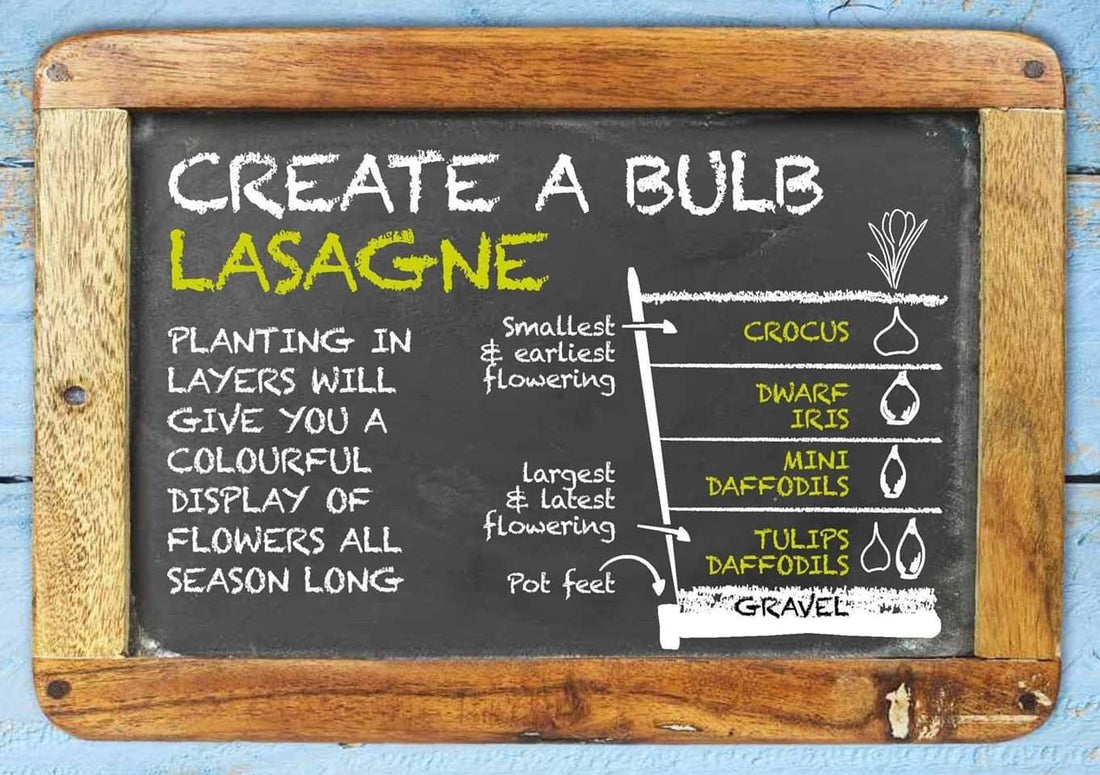There’s a great joy in planting bulbs at this time of year and looking forward to the burst of colour they’ll produce in Spring. With a combination of bulbs you can have flower colour from January right the way through to June - that’s 6 months of colour - simply from bulbs - and they certainly bring a welcome splash of brightness in those early months of the year when not many other flowers are brave enough to show their faces. So from Snowdrops and Iris in January and February, Daffodils and Tulips in March and April, Alliums in May and June and lots of other varieties in between, they offer a great transition in the garden between Winter, Spring and Summer filling gaps with colourful displays while we await shrubs and perennials to come into their own.
Spring flowering bulbs are very versatile and can be planted in containers or beds and most of them are reliable enough to come back every year - some tulips perhaps need to be replanted every year or every second year - a lot of the breeding in tulips to create beautiful elegant flowers has reduced the reliability of re-flowering every year - but certainly worth planting every year and offer great value for money or great bang for your buck. When planting bulbs, be it in containers or beds, good drainage is a key element for success, so for containers add plenty of stones at the base of the pot and mix up a batch of multipurpose compost with plenty of grit or perlite which will give lovely free draining conditions and your bulbs will thrive, We’ve even made up our own potting mix that you can use for bulbs or any planting that likes good drainage - a mix of horticultural grit and perlite. Another important consideration is to plant your bulbs at the correct depth - usually two and a half or three times the size of the bulb for the planting depth, so the bigger the bulbs the deeper they get planted. Not planting your bulbs deep enough can result in foliage but no flowers and tulips in particular like to be planted deep - at least three times the height of the bulb.
Planting bulbs in containers is a great way to bring a container to life in Spring and you can plant bulbs in layers - sometimes called lasagna planting - this means that you plant different varieties of bulbs to flower at different times all in the one container and you can play around with wonderful colour combinations and themes. When planning out your layer planting you plant your biggest size bulbs lower down and working your way upwards to the smallest bulbs. To start, get yourself a nice large pot and add some stones in the bottom to help create good drainage. Next add 6 or 7 inches of multipurpose compost, perhaps mixed with some grit or perlite, place your first layer of bulbs on top of the compost, pointed end of the bulbs sticking upwards, with about a bulb spacing between each bulb, 2 or 3 inches. Perhaps starting with tulip or daffodil bulbs. Then add a few inches of compost to cover over that layer of bulbs. Your next layer might consist of dwarf daffodils like Tete a Tetes - cover those again with a couple of inches of compost and your next layer could be crocus or iris - small bulbs that flower early in Spring - and cover them with the final layer of compost. You can plant the very top of the pot with some Winter violas or pansies to give you colour through Autumn and Winter while you await the Spring flowering display. So planting up a large container with several layers of different bulbs gives you maximum flower power and impact in a small space - easy to do and very worthwhile - something that, in the Spring, you’ll be so delighted that you’ve done.
Planting bulbs in beds and borders is also a great way to fill gaps in between flowering seasons of shrubs and perennials and I always like to plant in large clusters to create a big impact and as mentioned with a considered selection of bulbs you can have colour for 6 months from January to June from bulbs alone.
A few favorites worth a mention - for early flowers Iris Blue note with beautiful dark tipped petals - flowers in February and March - about 6 inches tall or Iris Frozen Planet with pale blue tips and 6 inches tall
A beautiful orange Crocus called orange monarch just 4 inches tall and flowering February and March - good flower for bees and amongst the only orange flowering Crocus
A little later, around March and April you have a beautiful daffodil called Camelot - gets to about 14 inches tall - a good strong plant with a great gold colour and a light fragrance.
For some elegant tulips in April and May you have Purissima which is a beautiful white creamy coloured variety and is a great cut flower and to contrast you have a tulip Black parrot which has dark feathered petals and looks great planted with the white Purrissima
For later again you’ve got Allium Ambassador flowering in May and June, tall purple flowers held on a high stem - these make a great long lasting cut flower also and are good in sun or partial shade.
So whether it’s for containers or the ground there’s loads of bulbs to choose from that are easy to grow and very rewarding
A few jobs for the week ahead;
- You can plant Autumn Seed potatoes now for a harvesting in the Winter - you could have new spuds for Christmas dinner
- Get some ground work done in advance of any Autumn planting - be that sowing a wildflower patch or preparing to plant shrubs, trees or hedges - a bit of groundwork preparation done now when conditions are good will make the job a lot easier
- Do up new containers with Cyclamen, violas, ivies, capsicums and grasses
- Sow seeds like Aquilegia, Lupins, Calendula and Hollyhock for flowers next Spring and Summer and perhaps prep the ground for sowing some wildflower seeds
- Set your lawn up for the winter with some autumn lawn feed and consider scarifying and aerating the lawn

